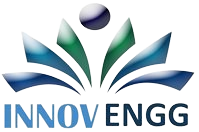Quality Assurance (QA) is a critical component of the software development life cycle, ensuring that products meet the highest standards of quality. One often underestimated but pivotal aspect of QA is documentation. In this blog post, we will explore the best practices for documentation in Quality Assurance, aiming to underscore its importance and provide practical insights for creating comprehensive and effective QA documentation.
I. The Significance of Documentation in Quality Assurance:
Traceability and Accountability:
Documentation serves as a trail of evidence, tracing the journey from requirements to test cases and results.
It establishes accountability, allowing QA teams to pinpoint the source of issues and ensure a transparent development process.
Knowledge Transfer:
Well-documented processes facilitate seamless knowledge transfer within and across teams.
Documentation ensures that new team members can quickly familiarize themselves with existing processes and contribute effectively.
Compliance and Auditing:
Documentation plays a crucial role in meeting regulatory requirements and industry standards.
QA documentation is often subject to audits, and robust documentation practices ensure compliance with various quality standards.
II. Best Practices for QA Documentation:
Requirements Documentation:
Clearly document and understand project requirements, ensuring they are measurable, testable, and traceable.
Use tools like requirement management systems to maintain a centralized repository for easy access and updates.
Test Planning and Strategy:
Develop a comprehensive test plan outlining the overall testing approach, scope, resources, and schedule.
Clearly define testing objectives, entry and exit criteria, and risk assessment to guide the testing process.
Test Case Design and Execution:
Create detailed and well-organized test cases, covering positive and negative scenarios.
Provide clear steps, expected results, and any preconditions to ensure reproducibility and accuracy.
Document test data and configurations necessary for test execution.
Defect Tracking and Reporting:
Implement a robust defect tracking system to log, prioritize, and monitor the resolution of identified issues.
Include essential information such as steps to reproduce, severity, and status updates in defect reports.
Test Execution and Results:
Document test execution results systematically, capturing both successful and failed test cases.
Include screenshots, logs, or any additional information that aids in understanding the context of test results.
Metrics and Reporting:
Establish metrics to measure testing progress, effectiveness, and quality.
Regularly generate and share comprehensive reports, highlighting key performance indicators and areas for improvement.
III. Tools for Effective Documentation:
Documentation Management Systems:
Utilize tools like Confluence, SharePoint, or other documentation management systems to centralize and organize QA documentation.
Ensure version control to track changes and updates.
Test Case Management Tools:
Implement test case management tools such as TestRail or Zephyr to streamline test case creation, execution, and tracking.
These tools often integrate with test automation frameworks, enhancing efficiency.
Collaboration Platforms:
Foster collaboration through platforms like Jira, where teams can seamlessly communicate, share documentation, and work together on projects.
IV. Challenges and Solutions:
Maintaining Documentation Currency:
Address challenges related to keeping documentation up-to-date by establishing regular review processes and assigning responsible team members for updates.
Balancing Detail and Simplicity:
Find the right balance between providing sufficient detail in documentation without overwhelming the reader.
Use visuals, such as flowcharts or diagrams, to convey complex information more effectively.
V. Continuous Improvement and Adaptability:
Kaizen Principles in Documentation:
Apply Kaizen principles to continually improve documentation processes.
Encourage feedback from team members and stakeholders to identify areas for enhancement.
Agile Documentation Practices:
Embrace agile documentation practices that align with iterative development cycles, ensuring documentation evolves alongside the product.
In the realm of Quality Assurance, effective documentation is not merely a bureaucratic requirement but a strategic asset. By adhering to best practices, leveraging appropriate tools, and embracing a culture of continuous improvement, QA teams can elevate their documentation practices. Ultimately, robust documentation not only ensures product quality but also contributes to a more efficient, transparent, and collaborative development environment. Master the art of documentation, and watch as your Quality Assurance processes reach new heights of excellence.

